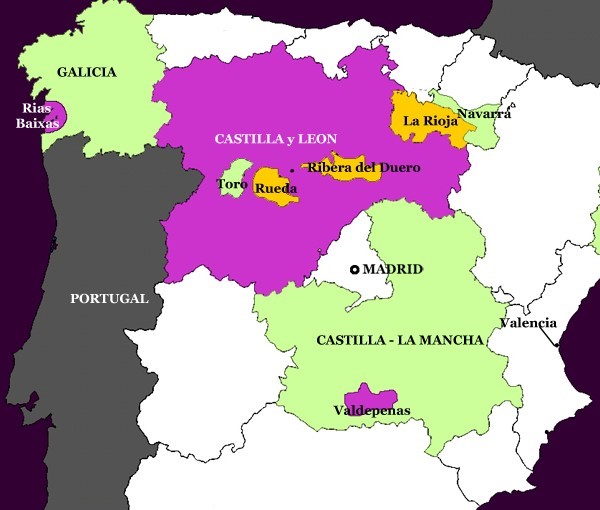Toro means bull in Spanish. This tiny wine district lies just across the border from Portugal’s grape growing region for Port grapes, but it’s not just a border these two wine areas share. The famous Douro River in Portugal flows from Portugal’s most famous viticultural region, to the city of Porto where it empties into the Atlantic. The Douro becomes the Duero River the minute one crosses into Spain. The Duero/Douro is actually birthed in Spain between the Rioja and the Ribera del Duero wine regions.
The Duero river exerts a tremendous influence on Toro's terroir
Wine-Knows will follow the Douro to the Duero on our trip from Portugal to Spain on this autumn’s itinerary. Toro, like Napa, is the name both of the area’s main town, as well as the wine district. While it is unclear exactly how the town’s name originated, the “bull” is nonetheless a fitting symbol for its quite robust red wines have been coveted by royalty since the 13th Century.

The Toro region was among the first to be recognized by the Spanish government as having unique and special wines. In 1933 it was granted important D.O. status which at the time was the highest quality wine in Spain. Shortly thereafter the Spanish Civil War broke out and Toro wines were one of the many casualties. It took 50 years for the area’s winemakers to refocus. In 1987 a handful of local wineries banded together to reapply for a second D.O. status. It was granted and this began a renaissance in Toro.
Fast forward to today, there are now 60 wineries in Toro. Many of the owners of these new wineries are from outside of Toro (most notably the Ribera del Duero and the Rioja), however, some of the most illustrious movers-and-shakers in French wine have invested heavily. Moreover, Toro is winning awards on the world-wide wine stage. Britain’s Decanter, (their equivalent of Wine Spectator) is giving 97 point scores to Toro’s muscular reds.
If you’re one of the fortunate Wine-Knows coming with us on the Portugal-Spain tour in September, you’ll have the opportunity to taste this upcoming region’s stellar wines and learn first-hand how Toro’s unique terroir is responsible for shaping a different version of the renowned Tempranillo grape.
Ever heard of Spain's Rueda wine region? The next blog will cover these coveted white wines made from the Verdejo grape.













